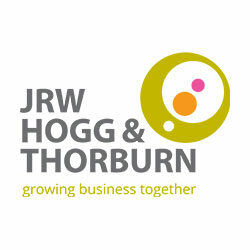Exposing hidden business property relief
Inheritance tax (IHT) planning often involves giving away your wealth, but as a business owner business property relief (BPR) can significantly reduce IHT. What can you do to help your estate achieve the maximum relief? Inheritance tax expert Brona MacDougall advises.
IHT and business property
Where you own a business, or a share of one, its value can qualify for business property relief (BPR). In effect, it removes 100% of the businesses value from the charge to inheritance tax (IHT), or in some circumstances 50%. Every £1 of value to which BPR applies can save your estate 40p where 100% BPR applies and 20p where BPR is 50%. Identifying qualifying business assets in your estate is important as it can increase the amount that your beneficiaries will receive.
100% or 50%
If you run your business as a sole trader all of your business assets qualify for 100% BPR. The 100% relief also applies to shares you own in an unlisted company if its main activity is carrying on a trade. 50% BPR applies to the value of land, buildings, machinery and plant, i.e. equipment that you personally own which is wholly or mainly used in the trade, as part of a business or partnership of which you’re a partner, or a company which you control. One of the main conditions for the 100% and 50% relief is that you must have owned the assets for two years.
Hidden business assets
While some personally owned assets used in your business stand out clearly, such as a business premises, others are far less obvious and might easily be overlooked by the person completing the IHT forms for your estate.
Personally owned equipment will not appear in your company’s or partnership’s balance sheet and might not if you’re a sole trader. The value is therefore easily missed when considering BPR.
Example
Mr A died in May 2021. At the time of his death he owned all the shares in ABC Ltd. He personally owned its trading premises, worth £200,000. Mr A was also a sole trader. The business showed no fixed assets on its balance sheet but Mr A used personally-owned equipment worth £10,000 mainly for the business. He also owned a car, worth £30,000, which he used mainly for work for ABC Ltd and his sole trader business.
While Mr A’s executors would easily spot the business premises as qualifying for 100% BPR, the equipment and car might slip under their radar. The equipment would qualify for 50% BPR, whereas the rate for the car will depend on its predominant use, i.e. 50% BPR will apply if it was mainly used on company business and 100% if it was mainly used in the sole trader business.
Identifying the personally owned assets as qualifying for BPR would reduce the IHT bill on Mr A’s estate by up to £56,000 (£200,000 x 50%) + (£10,000 + £30,000) x 100% x 40% and leave his beneficiaries that much better off.
To prevent your executors overlooking BPR, keep details of personally owned assets you use for your business with your records. Review and if necessary, update these each year. Cross reference them to your business accounts and tax returns for evidence that the assets were used wholly or mainly for business. Your executors might need these if HMRC enquires into their claims for BPR.
Land, buildings, plant and machinery which you personally own and use in your business can qualify for BPR. Because the assets will not show in your business’s accounts it will be easy for your executors to overlook claiming BPR for them. To prevent this, keep a record of such assets with your tax records.
